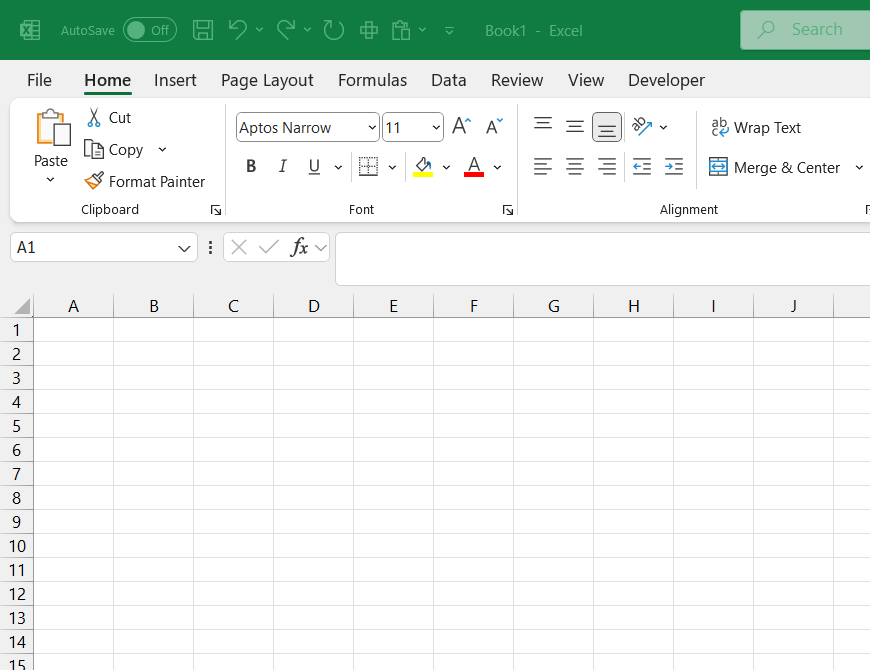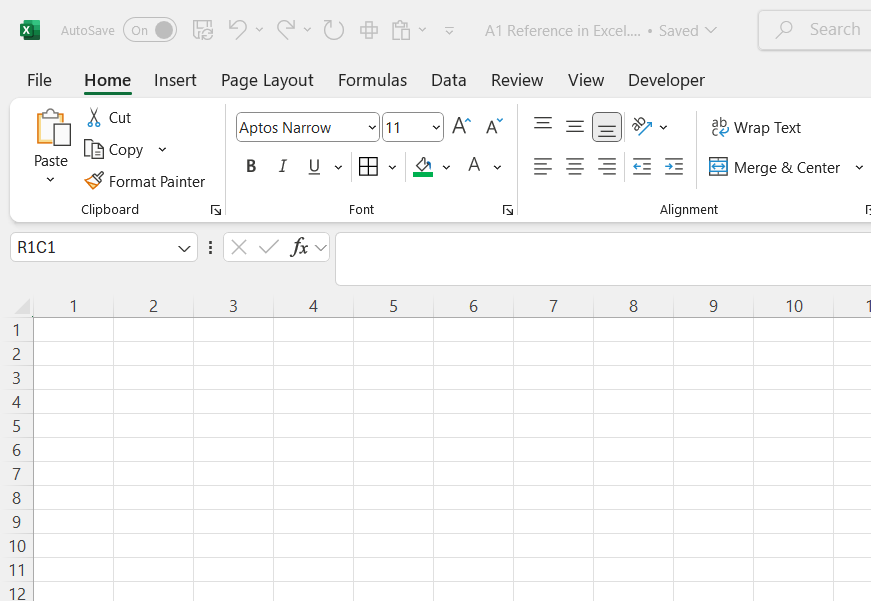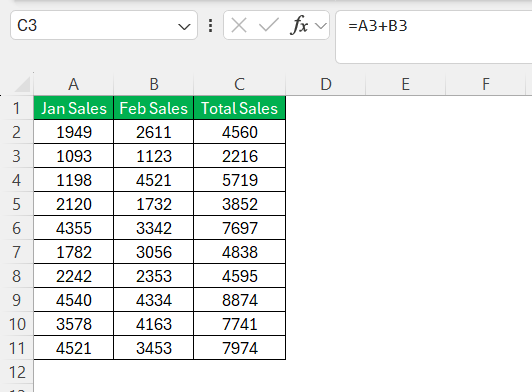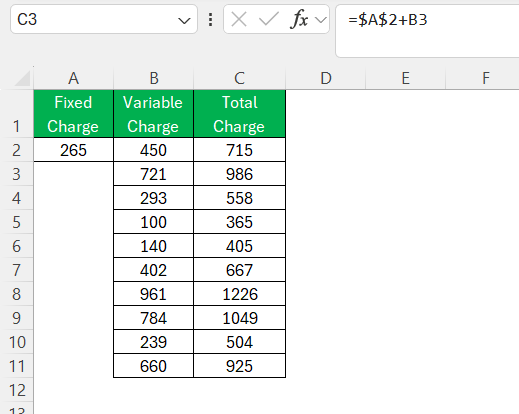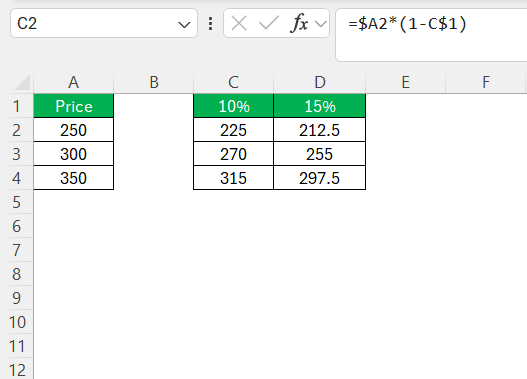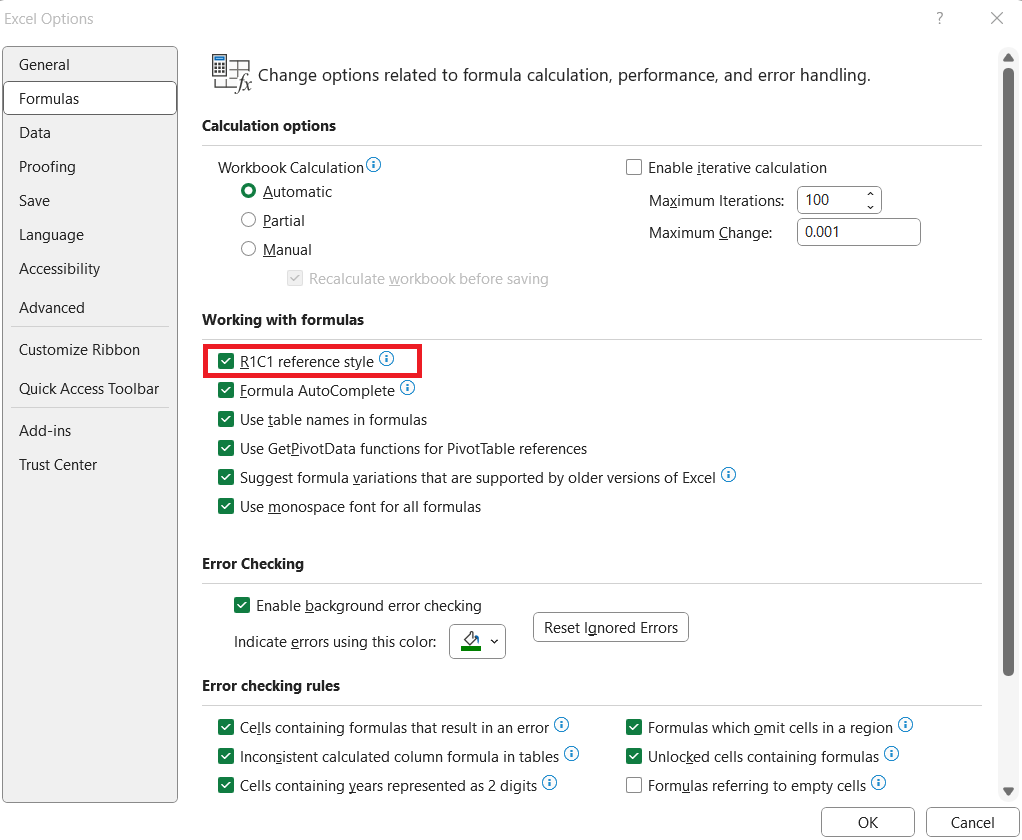In Excel, referencing cells might seem like a simple task, but understanding the nuances of the A1 reference style can elevate how efficiently and accurately I work with data. The A1 reference style, where columns are labeled by letters (A, B, C, etc.) and rows by numbers (1, 2, 3, etc.), forms the backbone of Excel’s referencing system.
In this article, I’ll break down everything you need to know about using A1 references in Excel—from the basics to advanced techniques that can make working with complex spreadsheets easier and more intuitive.
Key Takeaways:
- A1 references use letters and numbers, while R1C1 relies solely on numbers for a unique formula approach.
- Each type offers a different level of cell anchoring for varied calculation needs across cells.
- Easily toggle between A1 and R1C1 styles via the Options menu in Excel, enhancing flexibility for complex tasks.
- Select A1 for everyday work or R1C1 for advanced formulas and macros based on project needs.
- Maintain a uniform reference style within workbooks to avoid confusion, especially when collaborating with others.
Table of Contents
Unveiling the Basics of Excel Reference Styles
Decoding the A1 Reference Style
For those getting started with Excel, understanding reference styles is crucial. The A1 reference style is undoubtedly familiar; it combines a column letter and row number to pinpoint a cell within an Excel sheet. Think of it as a coordinate, where ‘A’ indicates our column and ‘1’ the row.
This notation is intuitive because it resembles a traditional grid – a structure most of us learned early on, making the transition to Excel fairly seamless.
Exploring the R1C1 Reference Style
The R1C1 reference style, on the other hand, is less common but valuable in its own right. This system shifts from letters and numbers to using strictly numbers to represent both rows and columns. So, a reference like R1C1 translates to row 1, column 1. It’s a format that’s particularly helpful when constructing formulas, as it enables a more straightforward way to visualize cell positions relative to the location of the formula itself.
Imagine working through a maze of calculations where relative positioning is key; R1C1 is like having a numerical map that simplifies the journey. It comes especially handy when I want to create patterned formulas and ensure consistency across rows and columns.
Charting a Course Through Excel’s Grid
Navigating with Absolute, Relative, and Mixed References
As we delve deeper into Excel, distinguishing between absolute, relative, and mixed references is essential for precision in our spreadsheets.
With relative references, as I drag formulas across cells, the references automatically update based on their relative positions. This adaptability is fantastic for swiftly applying the same calculation across a data set. For example, if I use =A2+B2 in cell C2 and copy it to cell C3, Excel will adjust the formula to =A3+B3 automatically. This feature is handy for calculations that follow a consistent pattern across rows or columns.
In contrast, absolute references are the anchors of my worksheet – unchanging as I copy the formula to different locations. Using the dollar sign ($) in front of the column and/or row locks that part of the reference, making sure it points to the exact same cell, no matter where I use it. So, if I type =$A$2+B2 in cell C2 and copy it to cell C3, the formula remains =$A$2+B3, keeping A1 constant while allowing B2 to adjust.
Mixed references provide the balance I need, keeping one part of the reference fixed and the other relative. For instance, I might want to lock the column but let the row reference change, or vice versa.
This gives me flexibility, yet control over my data, which is often the linchpin in complex formulas where pinpoint accuracy is paramount.
Tailoring Your Toolkit: Switching Between Reference Styles
How to Convert from A1 to R1C1 Notation and Vice Versa
I find the process of toggling between A1 and R1C1 notations in Excel quite straightforward. Follow the steps below to do the same:
STEP 1: Simply head over to the File menu, and click ‘Options’.
STEP 2: In the Formulas section, check or uncheck R1C1 Reference Style.
Checking it switches me to R1C1 style while unchecking reverts to A1 notation. Conversion is immediate and affects the active workbook, redefining how I perceive the grid. It’s worth remembering that this action doesn’t alter the underlying formulas or data—only the way references are displayed.
It’s like switching between two languages; the meaning remains the same, but the expression changes. This flexibility enables me to select the notation that suits my current project or preference.
Situational Advantages of Each Reference Style
The choice between A1 and R1C1 reference styles often boils down to situational necessity. The A1 style is universally recognized and user-friendly, particularly suitable for those just getting the hang of Excel. It’s the default mode and offers a quick grasp for identifying and referring to cells within a sheet – think of it as a comfortable pair of shoes that fit most casual occasions.
The R1C1 style has its distinct perks, excelling when dealing with complex formulas and large datasets. As a journalist often immersed in data analysis, I find it simplifies the creation and reading of formulas because of its consistency in pattern recognition. When writing macros or using the formula auditing tools, the numerical grid layout of R1C1 makes it easier to visualize the relative positioning of cells and understand the mechanics of my spreadsheet.
To sum up, A1 is the go-to for day-to-day tasks and for those used to the standard grid layout, while R1C1 is the choice for users who require a systematic approach to formulas and macro writing.
Practical Applications and Tips
Choosing the Right Reference Style for Your Project
Selecting the right reference style for any project I undertake in Excel is a critical decision that sets the stage for efficiency and clarity. For most projects with straightforward calculations and when sharing work extensively, I lean towards the A1 reference style. It’s universally understood and reduces the learning curve for colleagues and clients.
However, for projects with intricate formulas or when I anticipate heavy macro use, I migrate to the R1C1 reference style. It’s exceptionally beneficial for developing formulas programmatically because of its consistent numerical grid, which simplifies pattern recognition and iterative calculations.
Ultimately, the choice depends on the nature of the work, the audience, and personal preference. A clear understanding of the advantages and application context for A1 and R1C1 styles is a distinguished mark of an Excel proficient.
Best Practices for Maintaining Reference Styles Consistency
Maintaining consistency in reference styles throughout Excel workbooks is a best practice that contributes to the integrity of my data analysis. To ensure this, I always set the reference style at the beginning of a project and stick to it throughout. Consistency aids in comprehension, not just for myself but also for others who might interact with the data.
Collaboration is another factor I keep in mind. If I’m sharing my workbook with others, standardizing around the A1 reference style usually makes the most sense. It’s the most commonly used and therefore the most familiar, which helps prevent confusion.
Documentation within the workbook is also vital — recording the chosen reference style in the workbook’s metadata or in an instruction sheet ensures everyone is on the same page. For projects where it’s appropriate to use R1C1 style, I make sure to include clear notes and rationale for choosing this approach.
Keeping these best practices at the forefront of my work regimen fortifies the comprehension and effectiveness of my Excel projects.
FAQs: Expert Answers to Your Excel Questions
How to get A1 reference in Excel?
To get the A1 reference in Excel, ensure that the R1C1 reference style option is not enabled. By default, Excel uses the A1 reference style. If you find it’s set to R1C1, simply click on the ‘File’ tab, go to ‘Options’, select ‘Formulas’, and uncheck the ‘R1C1 reference style’ box. Click ‘OK’, and Excel will revert to the A1 reference format.
What Are the Key Differences Between A1 and R1C1 Reference Styles?
The key differences between A1 and R1C1 reference styles in Excel hinge on notation and relative positioning. A1 uses letters for columns and numbers for rows, which is intuitive for most users. R1C1 uses numbers for both, offering a clear view of a formula’s relative position to the cell it’s in, which is particularly helpful for programming and complex spreadsheets.
When Should I Use Relative References Over Absolute?
Relative references should be used when you need formulas to adjust as they are copied across cells, such as filling down a column or across a row. They are perfect for repeating the same calculation across multiple cells with different inputs. Absolute references are best when referencing a constant value or cell that should not change regardless of where the formula is applied.
How Can I Avoid Circular References in My Excel Sheets?
Avoid circular references by ensuring that your formulas do not reference the cell in which they’re entered, either directly or through a series of references. Always double-check formulas before finalizing them and test your spreadsheets regularly. Use the ‘Error Checking’ tool under the ‘Formulas’ tab to identify and correct any accidental circular references.
What Are Structured References and How Do I Use Them?
Structured references are used in Excel tables to refer to table data in a more readable way than traditional cell addresses. To use them, create a table from your data range, and then you can simply refer to table columns by names, such as Table1[ColumnName], within your formulas. This ensures that references stay accurate even as the table grows or shrinks.
John Michaloudis is a former accountant and finance analyst at General Electric, a Microsoft MVP since 2020, an Amazon #1 bestselling author of 4 Microsoft Excel books and teacher of Microsoft Excel & Office over at his flagship MyExcelOnline Academy Online Course.

